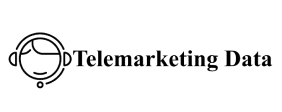Growth hacking ! It’s hard to ignore this term as it has been so much in recent years. A trendy keyword for young startupers or a real upheaval in the way businesses operate? Often wrongly associated with lead acquisition or outbound, Growth hacking is still too poorly understood, even by marketing professionals.
So let’s demystify this concept together
and explore its applications email data through concrete examples “made in Plezi”. Something to inspire you and integrate into your businesses!
Growth Hacking: Definition What is Growth Hacking? The term “Growth Hacking” was popularized in 2010 by Sean Ellis, a Californian marketer (ex-Dropbox), with the aim of helping start-ups grow quickly despite limited resources. This approach favors innovative and affordable techniques, unlike traditional marketing methods. Growth Hacking focuses on rapid and iterative actions, carried out by a cross-
functional team composed of developers
marketers, data analysts, customer success and sometimes salespeople. These teams collaborate to test hypotheses, analyze results, and optimize growth strategies.
Today, this method has spread far beyond start-ups and has become an essential lever of growth for companies of all sizes. It is based on a process of continuous innovation, where ideas are tested and amplified on a large scale to generate tangible results.
What is a Growth Hacker? A new a guide to employee promotion on social media job? The term has evolved: from a concept, it has become a function, that of “Growth Hacker”. The contours of this profession are still relatively vague, as the actions and areas of expertise are broad and transversal. Now, we talk about “Growth” profiles, specialized by specific areas of intervention, such as:
Outbound Growth: in charge of cmo email list generating leads, mainly via “cold prospecting campaigns”, based on cold emailing and phoning strategies, targeted advertising campaigns.
Growth Inbound: favors an approach based on relational marketing and not interruption as is the case in outbound. Among the levers available: content, SEO, influence, non-intrusive emailing, etc.
Growth Ops: operational and cross-functional function, supporting growth hackers. Optimizes the use of
Growth Product: works halfway tools, internal processes and data collection/processing. between product and marketing, to improve the user experience and maximize the growth generated by the product. This is a role often found in software publishers.
Growth Engineer: Develops and implements technical solutions to automate and optimize growth strategies.









